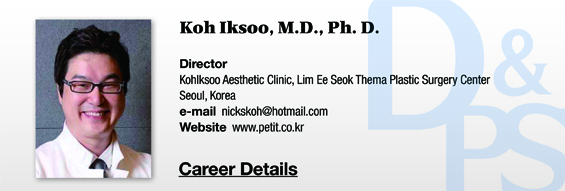When choosing the right dermal filler, the duration of effect is an important aspect to consider for both the surgeon and patient. However, it would not be wise to prefer a particular filler just based on its long duration. For the treatment to be successful, it is important to fully understand important properties of the filler as well.
Currently, fillers are classified as permanent, semipermanent and HA fillers (duration of 1-2 years) based on the duration of the effect. Semipermanent fillers were introduced as an alternative to permanent and HA fillers. Ironically, HA fillers with the shorted duration are the most widely used. This is due to the convenience of administration and reversibility using hyaluronidase.
In the beginning, HA fillers lasted only about a year but recent products are said to maintain the initial shape for 1.5-2 years. I also saw cases where the HA filler was maintained for up to 2 years.
I think the duration of HA fillers improved for two reasons. First is the improved processing technology. According to a manufacturer, the new HA filler is more resistant to absorption in the body. Second reason is the change in treatment techniques. In the early days, the filler procedure was carried out by making several small drop-like injections.
The drop-like shape has a larger contact area between the filler material and surrounding tissues, increasing the likelihood of exposure to degrading enzymes that speed up absorption. The current trend favors the one-block injection technique that minimizes the contact surface. This helps slow the degradation and lengthen the duration of a dermal filler.
[Advertisement] A-One LITE(Facial Diagnosys System) – Manufacturer: BOMTECH(www.bomtech.net)
Treatment Area and Duration
The duration of the same filler may vary depending on the treatment area. In most cases, injected filler can last 1-2 years but I have seen cases where it was maintained for up to 6 years. Therefore, it is helpful to understand which areas are associated with longer duration of the desired outcome. In such areas, semipermanent or permanent fillers would not be necessary.
In my experience, filler treatments were the longest lasting in the pretarsal roll. It was maintained for 6 years in some patients. On the other hand, filler injected in the frontal chin, nose and nasolabial grooves is particularly short-lived. It was absorbed in 6 months in some cases. Patients inevitably complained in such cases.
-To be continued





















